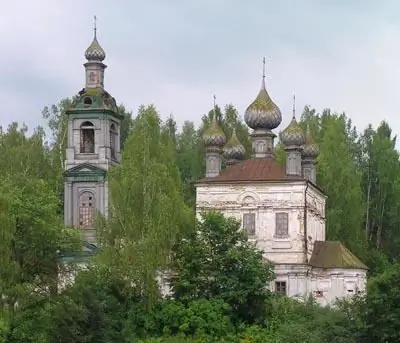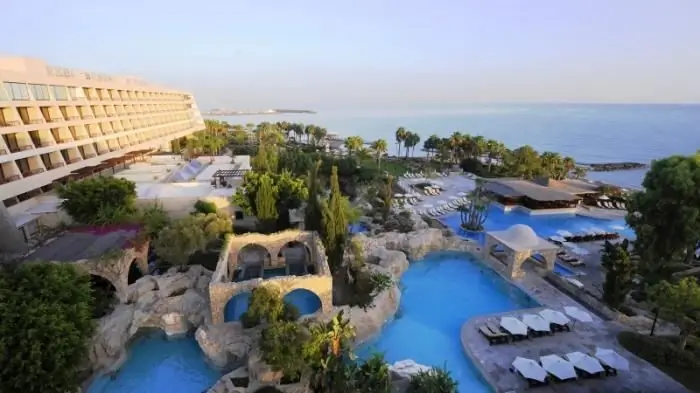- Author Harold Hamphrey [email protected].
- Public 2023-12-17 10:06.
- Last modified 2025-01-24 11:10.
The city of Zheleznovodsk is a natural he alth resort of our country. On its territory there are unique sources of mineral waters and mud baths, which have no analogues anywhere in the world. We will talk about all this and other sights of Zheleznovodsk in our article.
A trip to history
The first mineral springs of Zheleznovodsk were discovered by a Moscow doctor - Fyodor Petrovich Gaaz. Immediately after this event, the sick began to come to Mount Zheleznaya. The arrangement of the future famous balneological resort began a few years later. Thus, in the second half of the 19th century, a Cossack settlement arose on the site of the city of Zheleznovodsk. In the same period of time, the naturalist Fyodor Aleksandrovich Batalin visited the settlement. He discovered and described twenty-five more mineral springs, one of which was later decided to be named after him.
Zheleznovodsk continued to develop actively. The first water supply system was built on its territory, electricity appeared and a railway was built. In the first half of the 20th century,On the territory of the city, the construction of hotels, mansions and summer cottages began. Subsequently, all infrastructure facilities were significantly improved. A telephone network and sewerage appeared.

The picture shows a photo of the city of Zheleznovodsk, the sights of which will be discussed in detail below.
During the First World War, numerous hospitals were equipped here. Then the active construction of sanatoriums began. But during the Second World War, all the activities of Zheleznovodsk were paralyzed. The invaders caused great damage to the balneological facilities and urban infrastructure.
The city met the post-war years with the dynamic construction of balneological facilities and mud baths, infrastructure and utilities. At the moment, the city of Zheleznovodsk is in no way inferior to the famous European resorts.
Resort Park of Zheleznovodsk
The description of the sights of Zheleznovodsk should begin with the famous resort park, the foundation of which began in the first half of the 19th century. It is in this place that the lion's share of all the sights of the city is located.
The infrastructure of the park attracts tourists with its uniqueness. The fact is that the park is located on the slopes of the Zheleznaya, Beshtau and Razvalka mountains, namely, in a natural forest park zone. The territory of the park covers about two hundred hectares, and its unusual layout amazes travelers. Right in the middle of the forest, there are neat paths for walking, the so-called he alth paths. They areall are equipped with picturesque and comfortable places to rest and signs indicating the length of the route.
There are pump rooms with mineral springs, ancient buildings, pavilions, sculptures and fountains on the numerous alleys of the park. We will tell you more about these and other sights of Zheleznovodsk in the corresponding chapters of the article.
Main healing springs of Zheleznovodsk
The main attraction of the city is its mineral water springs, which number more than twenty. At the moment, three of them provide drinking cure: Slavyanovsky, Smirnovsky and Lermontovsky.
Slavyanovsky spring was discovered at the beginning of the 20th century by the Soviet hydrogeologist Nikolai Nikolaevich Smirnov. With the help of a manual drilling machine, a well was dug to a depth of 120 meters. The temperature of mineral water reaches 55 degrees, it has no analogues in the world. It is used to prevent and treat many diseases.
Smirnovsky source appeared thanks to the efforts of Dr. Semyon Alekseevich Smirnov. He discovered a self-flowing spring and gave the order to the workers to clean it up. As a result, several holes were found at the bottom through which hot mineral water poured out. Her temperature reached 38 degrees. The main area of application of water is the treatment of diseases of the gastrointestinal tract.
Lermontov's source is the oldest one. It was opened at the beginning of the 19th century by Fyodor Petrovich Gaaz and laid the foundation for the development of the resort. The pump-room is located in one of the most picturesque places in the park. Ownit received its name thanks to the poet, who for some time rested and was treated here.
Pushkin Gallery
This is one of the most recognizable sights of Zheleznovodsk. The Pushkin Gallery was built at the foot of Zheleznaya Mountain in the first half of the 20th century. The gallery consists of metal plates and stained glass. The design was made by the Warsaw and St. Petersburg plant, after which it was delivered to the city by rail.

The picture shows a photo of the sights of Zheleznovodsk (Pushkin Gallery).
Inside the Pushkin Gallery is divided into a concert hall, where creative evenings are held periodically, and a gallery that exhibits local artists.
Ostrovsky's baths
The second most recognizable landmark of the city of Zheleznovodsk is the Ostrovsky Baths. The building was built in the second half of the 19th century according to the project of the famous Russian architect of French origin Pavel Yulievich Syuzor. It is made in the Moorish style and is located in one of the picturesque squares of the city, near the railway station.

It is worth noting that the baths got their name thanks to the brother of the famous writer, who at one time was actively involved in the formation and development of the resort. Currently, the building is mothballed and is not used for its intended purpose.
Zheleznaya Mountain
Zheleznaya Mountain is a natural landmark of Zheleznovodsk. It is an unformed volcano,inside which is the magma core. The mountain is cone-shaped, over 850 meters high. About twenty springs of mineral waters were found at its base. At the top of the mountain there is an observation deck with a magical view of the city.

This image is a photo of the attraction of Zheleznovodsk, the description of which is provided in the article.
On the western side of Zheleznaya Mountain is the famous Resort Park, one of the paths of which will lead you to the top.
Cascading staircase
There is another attraction of Zheleznovodsk in the Kurortny Park. It is one of the most favorite walking places for citizens and tourists. This is the well-known Cascading Staircase. It was built at the beginning of the 20th century in order to protect the slope of Zheleznaya Mountain from excessive waterlogging. As planned by the architect, unused mineral water flowed down the stairs into a specially equipped tray.

At the moment the ladder is not used for its intended purpose. By decision of the city administration, it was decorated with various fountains, sculptures of fairy-tale characters and flower beds.
Palace of the Emir of Bukhara
The palace complex was built at the beginning of the 20th century by order of Emperor Alexander III. It is made in a peculiar oriental style and was built as the residence of the emir and the Russian general Seyid Abdullah Khan.
The palace is decorated with sculptures of lions, wooden carvings and metal ligatures. The interior is amazingan intricate layout with crescent-shaped spiral staircases, a fireplace, and a room that was intended for a harem.

It is worth noting that the emir did not have time to live there, due to sudden death, and the new owner, after the construction of the palace was completed, handed it over to the royal family. Then, during the war years, there was an infirmary. Currently, having gone through several reconstructions, the palace is one of the most visited sights of the city, inside which a modern sanatorium is equipped.






